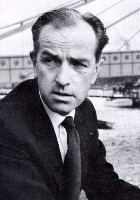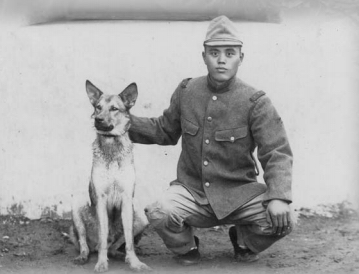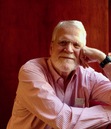Mark Scott Smith's Blog: Enemy in the Mirror, page 98
September 26, 2016
A soldier’s Diary – 日本兵の日記
Excerpts from the diary of Tamura Yoshikazu.
Wewak New Guinea
March 1943
When I hear birds of paradise sing, I remember cuckoos back in Japan. They live among tropical coconut trees. I don’t know what they are saying, but they make very weird cries that sound like “keukoh, kiou, keukoh, kiou.”
A mate of mine received a letter from home and he showed me a copy of a
newspaper dated the end of January. Nothing seemed to have changed at
home. It also contained an article about the front line in New Guinea. Who
could know that I am in New Guinea now?
The climate here is similar to that of mid-August in Japan. Yet, there are so many
noxious insects, and the mosquitoes in particular are a real nuisance. Since many of
us are sick and do not feel well, our fighting spirit seems to be low.
____________
May 1943
A few days ago, my friend was killed by enemy shells in this bay. However, the
bay with its white waves does not look any different. There are a few drums
floating away from boats. The landscape of the headland is as lush as before.
Boats are moored to the wharf as before. But I feel so devastated!
_______________
April 1943
From the top of the hill with its fresh green grass
I gaze towards the ocean horizon.
Across the Pacific, across the Japan Current,
From far away, a boat is coming with might and courage
With letters from our homeland.
Sitting in the shade of a coconut tree
Looking across the sky above the ocean waves
Thinking about home from New Guinea.
With the heat, it hurts to realize
How far this place is from home.
_____________
Tamura Yoshikazu was killed in battle in March 1944 at Biliau, New Guinea.
The post A soldier’s Diary – 日本兵の日記 appeared first on Enemy in the Mirror.
September 22, 2016
Zoot Suit Riots – June 1943
Zoot suit attire consisted of baggy legged, narrow- cuffed, waist-high pants, a short tie over a buttoned shirt, suspenders, a long coat with wide lapels and padded shoulders, wide-legged, pegged trousers, flashy shoes and either a fedora or a tando hat with a feather of varying lengths.
In the summer of 1943, Zoot suit riots broke out between predominantly black and Mexican gang members in Zoot suits and mostly white American servicemen stationed along the Pacific coast. On June 3, eleven sailors on shore leave claimed they were attacked by a group of Mexican pachucos. In response, over 200 uniformed sailors charged into the Mexican American community of East Los Angeles, attacking any zoot suiter they encountered.
For several nights, uniformed servicemen (including sailors, soldiers and marines), joined by some white civilians, marched down the streets of east Los Angeles, breaking into bars and theaters, and assaulting anyone in their way. Many zoot suiters were beaten and often stripped of their clothes.
Civilians cheered as the local press depicted the marauding servicemen as heroes combating a “Mexican Crime Wave.” Los Angeles police arrested over 600 Mexican-American youth in a preventive action. None of the roving gang of attackers was arrested. Finally, at midnight on June 7th, military police stepped in to stop the rioting and declared Los Angeles off limits for all military personnel.
The post Zoot Suit Riots – June 1943 appeared first on Enemy in the Mirror.
September 19, 2016
Naming of Parts – Henry Reed

Henry Reed (1914-1986) was a British poet, translator, radio dramatist and journalist. Lessons of the War, published in 1942, was a collection of three poems parodying WWII British army basic training, which had a shortage of equipment at that time. The poem describes a British sergeant-instructor delivering a lecture to his green recruits on the various parts of a rifle.
http://www.enemyinmirror.com/wp-content/uploads/2016/09/namingofparts.mp3
Lessons of the War
To Alan Michell
Vixi duellis nuper idoneus
Et militavi non sine gloria
Enough duels recently qualified
They fought not without glory
To-day we have naming of parts. Yesterday,
We had daily cleaning. And to-morrow morning,
We shall have what to do after firing. But to-day,
To-day we have naming of parts. Japonica
Glistens like coral in all of the neighboring gardens,
And to-day we have naming of parts.
This is the lower sling swivel. And this
Is the upper sling swivel, whose use you will see,
When you are given your slings. And this is the piling swivel,
Which in your case you have not got. The branches
Hold in the gardens their silent, eloquent gestures,
Which in our case we have not got.
This is the safety-catch, which is always released
With an easy flick of the thumb. And please do not let me
See anyone using his finger. You can do it quite easy
If you have any strength in your thumb. The blossoms
Are fragile and motionless, never letting anyone see
Any of them using their finger.
And this you can see is the bolt. The purpose of this
Is to open the breech, as you see. We can slide it
Rapidly backwards and forwards: we call this
Easing the spring. And rapidly backwards and forwards
The early bees are assaulting and fumbling the flowers:
They call it easing the Spring.
They call it easing the Spring: it is perfectly easy
If you have any strength in your thumb: like the bolt,
And the breech, and the cocking-piece, and the point of balance,
Which in our case we have not got; and the almond blossom
Silent in all of the gardens and the bees going backwards and forwards,
For to-day we have naming of parts.
The post Naming of Parts – Henry Reed appeared first on Enemy in the Mirror.
September 16, 2016
PT-109 – August 1943
Seeking combat duty in February 1943, Lt. John F. Kennedy was assigned to Motor Torpedo Boat Squadron 2 at Tulagi Island in the Solomon Islands. On August 1, 1943 PT-109, commanded by JFK, was rammed and sunk by the Japanese Cruiser Amagiri. Two of PT-109’s crew were killed and several others badly injured. JFK saved a badly-burned crew member by towing him three miles to a nearby atoll.
The post PT-109 – August 1943 appeared first on Enemy in the Mirror.
September 14, 2016
High Flight – John Magee

John Gillespie Magee, Jr. (June 1922-December 1941), born to missionaries in China, served in the Royal Canadian Air Force in WWII. He died in a mid-air collision over Lincolnshire in 1941.
High Flight
Oh! I have slipped the surly bonds of Earth
And danced the skies on laughter-silvered wings;
Sunward I’ve climbed, and joined the tumbling mirth
Of sun-split clouds – and done a hundred things
You have not dreamed of – wheeled and soared and swung
High in the sunlit silence. Hov’ring there,
I’ve chased the shouting wind along, and flung
My eager craft through footless halls of air.
Up, up the long delirious burning blue
I’ve topped the wind-swept heights with easy grace
Where never lark, or even eagle flew.
And while with silent lifting mind I’ve trod
The high untrespassed sanctity of space,
Put out my hand and touched the face of God.
– John Magee
The post High Flight – John Magee appeared first on Enemy in the Mirror.
September 12, 2016
Economic Reality 1943 Japan
Country
% of Total War making Potential
United States
41.7%
Germany
14.4%
USSR
14.0%
UK
10.2%
France
4.2%
Japan
3.5%
Italy
2.5%
Seven Powers (total)
(90.5%)Even in the midst of economic doldrums, wartime USA still had:
Nearly twice the population of Japan
Seventeen time’s Japan’s national income
Five times more steel production
Seven times more coal production
Eighty times the automobile production.Source: Grim Economic Realities
The post Economic Reality 1943 Japan appeared first on Enemy in the Mirror.
September 8, 2016
Josef Mengele – Angel of Death
Born in 1911, Josef Mengele earned an M.D. and Ph.D. in physical anthropology from the University of Munich in 1935. In 1937, at the Institute for Hereditary Biology and Racial Hygiene in Frankfurt, he became the assistant of Dr. Otmar von Verschuer, a leading scientific figure widely known for his research with twins.
In 1940, Mengele served in the medical service of the Waffen-SS on the Eastern front. Wounded in January 1943, he returned to Germany and began work at the Kaiser Wilhelm Institute (KWI) for Anthropology, Human Genetics, and Eugenics in Berlin, under the direction of his former mentor Dr. von Verschuer.
In April 1943, he was promoted to SS captain and transferred to the Auschwitz concentration camp in May 1943. As an SS officer officer and physician at the death camp, Mengele joined a team of doctors who selected victims for the gas chamber or deadly human experiments. Mengele’s own ghastly experiments focused primarily on twins.
Mengele left Auschwitz in January 1945, avoiding the arrival of the Russian army. In the immediate postwar period he was briefly in US custody, but unrecognized as a war criminal, he was quickly released. From the summer 1945 until spring 1949, he worked with false identification papers as a farmhand in Bavaria. Thereafter, his prosperous family helped him emigrate to Argentina.
When the International Military Tribunal issued a warrant for his extradition in 1960, Mengele moved to Paraguay and then to Brazil where he lived near Sao Pãolo for the rest of his life. He reportedly suffered a stroke while swimming at a vacation resort in Brazil in 1979 and drowned. He was buried near Sao Pãolo under the name “Wolfgang Gerhard.”
The post Josef Mengele – Angel of Death appeared first on Enemy in the Mirror.
September 5, 2016
U.S. Women WWII
During WWII, ~350,000 women served in the U.S. Armed Forces at home and abroad. Additionally, with many men leaving to enlist in the armed forces, the female percentage of the U.S. workforce increased from 27% in 1940 to 37% in 1945 when ~25% of married women worked outside the home.
The post U.S. Women WWII appeared first on Enemy in the Mirror.
September 1, 2016
Moe Berg
Morris “Moe” Berg was an amazing character. Fluent in several languages, he reportedly read ten newspapers a day and was a successful contestant on the radio quiz show Information, Please. After graduation from Princeton University and Columbia Law School, Berg played 15 seasons in the major leagues as a backup catcher.
Upon completion of his professional baseball career, he worked for the Office of Inter-American Affairs on assignment in the Caribbean and South America in 1942-43. In 1943 Berg joined the Office of Strategic Services as a Paramilitary Operations Officer. In the fall of 1943, he parachuted into Yugoslavia to evaluate resistance groups operating against the Nazis. In late 1943, Berg was assigned to an OSS operation interviewing Italian physicists to see what they knew about Nazi nuclear weapons research.
In December 1944, Berg was assigned to attend a lecture in Zurich by the German physicist Werner Heisenberg with orders to kill Heisenberg if convinced the Germans were close to developing an atomic bomb. Deciding the Germans were not close, Berg returned to the United States and resigned from the Strategic Services Unit in April 1945. Awarded the Medal of Freedom on October 1945, Berg rejected the award (though his sister later accepted it on his behalf after his death).
The post Moe Berg appeared first on Enemy in the Mirror.
August 29, 2016
United Nations WWII
A lot of people seem surprised to hear that the term “United Nations,” coined by FDR, was used during WWII.
President Franklin Roosevelt first coined the term “United Nations“ to describe the Allied countries in WWII. On New Year’s Day 1942, FDR, Prime Minister Winston Churchill of Great Britain, Maxim Litvinov of the USSR and T. V. Soong of China, signed the United Nations Declaration. On the next day, the representatives of twenty-two other nations added their signatures. By March 1945, 21 additional states had signed.
The post United Nations WWII appeared first on Enemy in the Mirror.
Enemy in the Mirror
I began by posting events around the turn This website www.enemyinmirror.com explores the consciousness, diplomacy, emotion, prejudice and psychology of 20th Century America and her enemies in wartime.
I began by posting events around the turn of the 20th century as I was researching my first novel about the Pacific War. I continued through WWII for my second novel about the Battle of the Atlantic. Now I am beginning to look at the Cold War as I gather information for my next novel about the Korean War. ...more
- Mark Scott Smith's profile
- 7 followers





